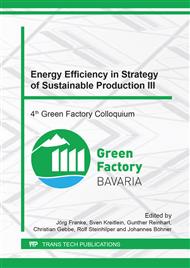p.208
p.220
p.230
p.237
p.244
p.252
p.262
p.267
p.275
Investigation of Drag Reduction due to Dimpled Surfaces in Narrow Channels by Means of Flow Simulations
Abstract:
Reduction of drag and flow resistance in systems containing moving fluids is a prominenttool to increase energy efficiency. Besides active flow control – such as moving surfaces or boundarylayer suction – passive techniques such as surface patterning by means of dimples are promising sinceno additional energy consumer is introduced into the system. Even though the effect of drag reductiondue to dimples has often been observed, the physical principals responsible for this effect are not yetunderstood. Most of the research concerning dimples and drag reduction published so far has beencarried out experimentally, not many numerical investigations on this topic have been done. The mainreason for this is that the tiny, transient flow structures generated in direct vicinity of dimples can noteasily be resolved in simulations. Even in case of time dependent numerical investigations it is notclear, whether and with which method of sub-grid scale modeling Large Eddy Simulations are capableof modeling these structures sufficiently. In this work we investigated different surfaces with dimpledepth to diameter ratios h/D reaching from 0.01 to 0.1 in channels of height H = 0.417D at Reynoldsnumbers ReD 5 830 and ReD 11 650 using steady state simulations with a k-omega-SST turbulencemodel. Drag reductions were observed for all setups h/D < 0.08 compared to the smooth channel.The best results were obtained with dimple depths of 4-5 % of diameter showing a slight dependenceof Re which is in good agreement with literature. As the experimental investigation of the flow overdimpled surfaces is limited in spacial and temporal resolution we could demonstrate that numericalinvestigations give the possibility to overcome this drawback. However the solution of simulationsstrongly depends on numerous factors such as the discretization scheme, the numerical models andthe grid used to obtain results which might be a reason for slightly varying results of such simulationsfound in literature.
Info:
Periodical:
Pages:
244-251
DOI:
Citation:
Online since:
October 2017
Authors:
Keywords:
Price:
Сopyright:
© 2017 Trans Tech Publications Ltd. All Rights Reserved
Share:
Citation:


